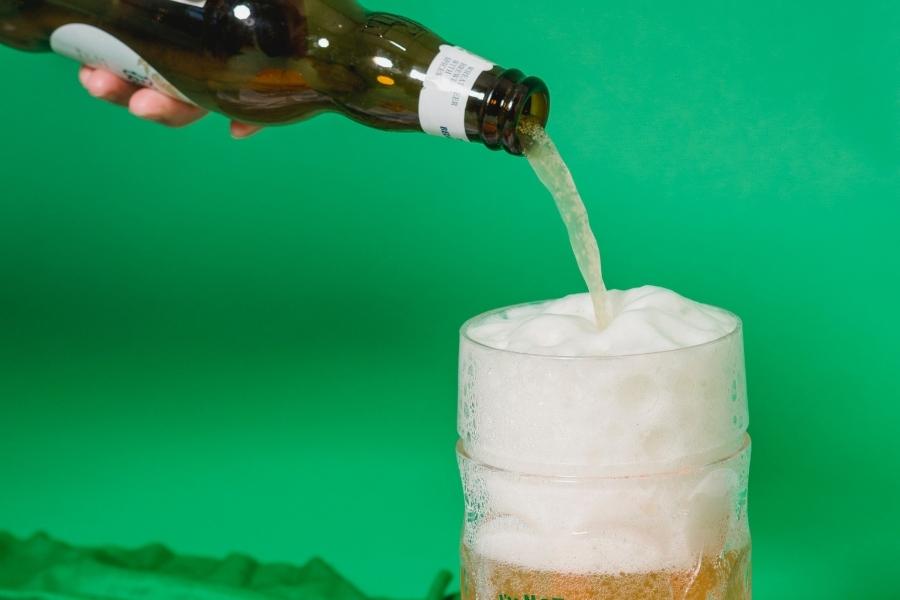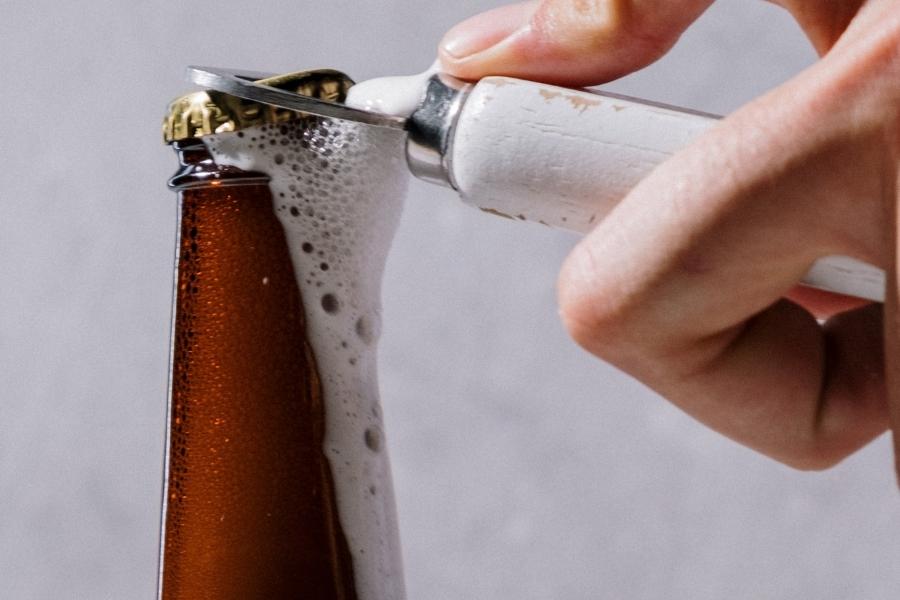If you buy something through a link in our posts, we may get a small share of the sale.
Carbonation is the most important aspect of brewing beer. It can make or break a batch and is something that every brewer should know. You don’t want to have a beer that’s over-carbonated or under-carbonated. Therefore, learning how to tell if homebrew is carbonated is an essential skill to have.
Contents
How to Tell if Homebrew Is Carbonated
The best and easy way to tell if your homebrew is carbonated is by looking at the bottle’s cap. If there is a subtle bulge in the center of the cap, then your homebrew is carbonated. If there is no bulge, then your alcohol is not carbonated. The bulge is a result of the CO2 that’s in the beer. When the carbonation increases, the bulge becomes more pronounced.
Another way to tell if homebrew is carbonated is by giving the Growler or bottle a little shake. If you see bubbles coming to the surface, then your alcohol is carbonated. If there are no bubbles, then your beer is not carbonated. Ensure you don’t shake the bottle too much, or else you’ll create foam. This will also make it difficult to pour the beer.
You can also bottle a sample of your beer and put it in the plastic bottle previously used to hold carbonated water. If you feel the stiffness of the water bottle, then your homebrew is carbonated. If the water bottle feels limp, then your beer is still in the process of carbonating or not carbonated at all.

Other Ways to Check for Carbonation
There are many other ways to check for carbonation, and each brewer has their own preference. The best thing is that when you feel one method is not working for you, then try another method until you find the perfect way that works best for you.
The following are other ways you can check for carbonation in your homebrew and still get an accurate result:
Use a Hydrometer
A hydrometer is an essential brewing tool that every brewer should have. It’s a great way to check for carbonation because it measures the specific gravity of your beer. The specific gravity will tell you how much sugar is dissolved in your beer. The more sugar that’s dissolved, the more carbonation there will be.
It works by measuring the density of your beer. The hydrometer will float in the beer, and the higher it floats, the more carbonation there is. So it is also an ideal tool to check for over-carbonation and under-carbonation.
Use a Refractometer
A refractometer is another brewing tool used to measure your beer’s specific gravity. It’s similar to a hydrometer, though considered more accurate. It works by measuring how much light is bent when it passes through your beer. The more sugar that’s dissolved, the more carbonation there will be, and the more light that’s bent.
Use a Carbonation Table
Carbonation tables are charts that help you determine the carbonation level of your beer. It is dependent on two things, the residual level of carbon dioxide past fermentation and the amount of carbonation coming from the sugar you added during bottling.
To use a carbonation table, you need to know the specific gravity of your beer and the temperature. Once you have this information, you can look at the carbonation table and find your beer’s specific gravity and temperature. This will tell you how much carbonation is in your beer.
Check the Carbonation Level with Your Nose
This is a very simple way to check for carbonation and one that doesn’t require any brewing tools. Just open the bottle and smell it. If you smell CO2, then your beer is carbonated.
The downside to this method is that it’s not very accurate. For example, you might think your beer is carbonated when it’s not or vice versa. Other factors such as whether you’re making a dark or light beer, and your sense of smell can also affect the accuracy of this method.
Use Carbonation Drops
Carbonation drops are a convenient and easy way to see if carbonation has occurred. They are small tablets that dissolve in your beer and release CO2. This will give you an indication of how much carbonation is in your beer.
Most of these drops will have instructions on how many to use and how long to wait before checking the carbonation level. It’s important to follow these instructions because using too many drops or waiting too long can give you an inaccurate reading.
Use a Carbonation Tester
This device is designed to check the carbonation level of your beer. It’s a small tube that you insert into your bottle of beer. The amount of CO2 in the beer will cause the liquid in the tube to change color.
The carbonation tester is a very accurate way to review carbonation and is very easy to use. Many of the tester kits will come with a chart that you can use to determine the carbonation level of your beer.
Check the Carbonation by Opening the Bottle
This is probably the most common way to tell if carbonation has taken place. Just open the bottle and see if there’s any foam. If there is, then your beer is carbonated. As you know, foam is just CO2 that has been released from the beer.

When the foam dissipates, that’s a good indication that your beer is carbonated. And if there’s no foam at all, then your beer is probably not carbonated, and you need to give it more time or add more sugar.
The downside to this method is that it can be hard to tell if your beer is carbonated or not. The foam can dissipate quickly, so you might think your beer is carbonated when it’s not.
Benefits of Carbonation
Carbonation can have many benefits for your choice of homebrew, whether it’s cider or beer, and each time you carbonate your beer, you will notice a difference. No brewer wants to have an incomplete beer that is not carbonated. Here are some of the benefits of carbonation:
- Enhance the flavor of your beer: The CO2 in carbonation can help enhance your beer’s flavor. This is because it helps release the aromas from the hops and malt.
- Make your beer more refreshing: Carbonation can help make your beer more refreshing and thirst-quenching. This is because the CO2 helps break down the beer and make it easier to drink.
- Make your beer look more appealing: Carbonation can also help make your beer look more attractive. The bubbles in carbonation can help to make your beer look more vibrant and alive.
- It reduces the risk of infection: Carbonation can also help reduce the risk of infection. This is because the CO2 helps to keep the beer sterile and free from bacteria.
Related Questions
How Long Does It Take Homebrew to Carbonate?
It takes 5-10 days for homebrew to carbonate. This is because the yeast needs time to eat the sugar and produce CO2. However, this will vary depending on the recipe, the type of yeast, and the temperature.
How Long Before You Can Drink Homebrew After Bottling?
After bottling, give the beer at least 2 weeks to carbonate. This will allow the yeast to eat the sugar and produce CO2. However, it’s best to wait 3-4 weeks before drinking homebrew. This will allow the beer to mature and develop its flavor.
How Much Sugar Do I Need to Carbonate My Beer?
The amount of sugar you need to carbonate your beer will depend on the recipe, the type of yeast, and the temperature. However, a good rule of thumb is to use 3/4 cup of sugar for every 5 gallons of beer.
Conclusion
There are several ways to tell if homebrew is carbonated, and each has its own benefits. Don’t let your homebrew beer go flat, use one of these methods to check the carbonation level. Homebrew that is carbonated will have a more enhanced flavor and be more refreshing.

